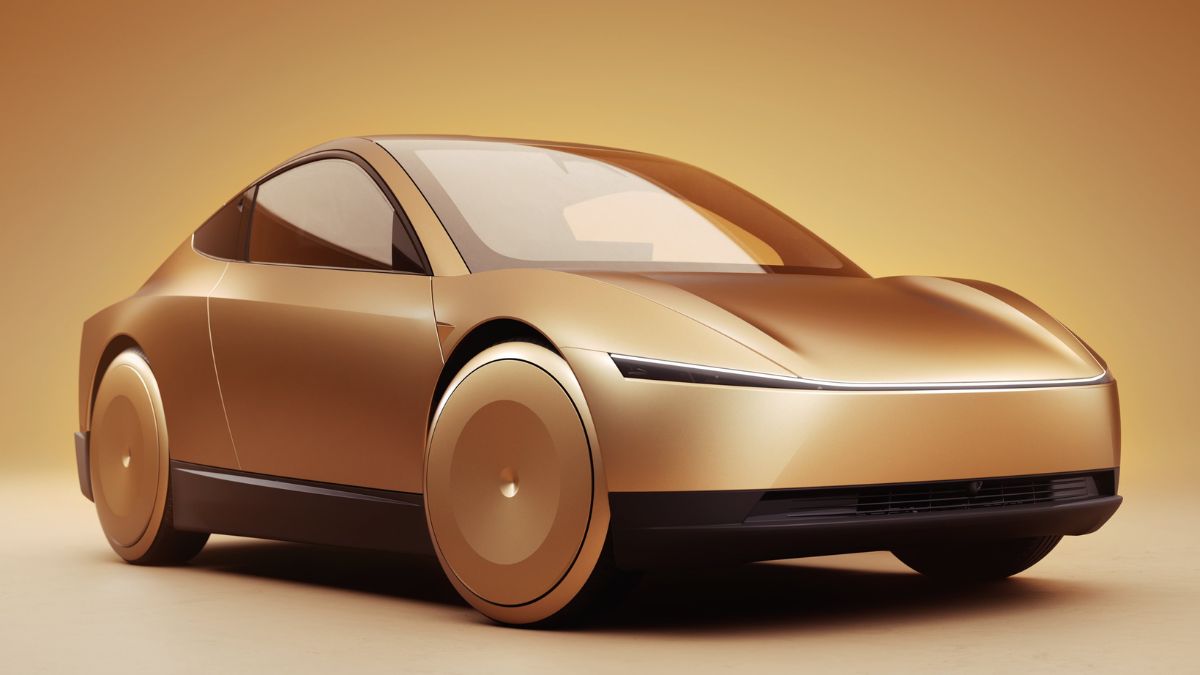

Tesla Cybercab electric vehicle (EV) was unveiled at the “We, Robot” event on Thursday. Introduced at the Warner Bros lot in Burbank, California, as a competitor to the likes of Alphabet’s Waymo, the highly-anticipated robotaxi joins Tesla’s lineup of autonomous self-driving vehicles such as the Cybertruck, Model 3, and Model S. However, unlike the aforementioned vehicles, it does not feature a dedicated steering wheel or any paddles, hinting towards the potential realisation of billionaire Elon Musk’s vision of a driverless future.
In addition to the Cybercab, Musk unveiled a Robovan and showcased Optimus — a general-purpose robotic humanoid. The billionaire also reemphasized his promise of bringing autonomous driving to the Tesla Model 3 and Model Y in California and Texas by 2025.
With the introduction of the Cybercab, Musk’s Tesla aims to break into the robotaxi market, which currently has Waymo as the major player in the US, operating a fleet of uncrewed vehicles. Tesla’s robotaxi will not feature any pedals or even a steering wheel. Instead, it will rely on artificial intelligence (AI) and an array of sensors and cameras to steer and travel to the set destinations, leveraging the company’s FSD system based on Advanced Driver Assistance System (ADAS) Level-2.


Interior of the Tesla Cybercab
Photo Credit: Tesla
Cybercab appears to have a coupe-like two-door design. It has butterfly doors and a large touchscreen display placed at the centre console — a design element which has now become synonymous with Tesla vehicles. The rest of the interior will be minimalistic, with no visible buttons anywhere on the centre console. Single LED strips run along the full front and rear of the Cybercab, whereas its sloping roof appears to be inspired by the Tesla Cybertruck. Unlike other Tesla vehicles, which need to be plugged in, the robotaxi will have inductive charging, which uses electromagnetic power induction to power devices.
While other specifics, such as the possible powertrain or range, were not revealed, Musk promised that Cybercab would be priced below $30,000 (roughly Rs. 25 Lakh) in the US and could have an operation cost as low as $0.20 (roughly Rs. 17) per mile. Tesla Cybercab is expected to hit production in 2026.
At the event, Tesla also unveiled a Robovan — a 20-seater vehicle that could serve as a shared, low-cost solution for travellers. However, the billionaire did not delve into the details of the prototype vehicle.
Updates to Tesla Model 3 and Model Y have also been introduced. Musk has promised that Tesla will bring autonomous driving to vehicles in California and Texas by the end of next year.
The Chinese Embassy and Consulates in India have issued over 50,000 visas to Indian citizens…
File image of Trent Alexander-Arnold© AFP Trent Alexander-Arnold is closing in on a…
The average age of a Ferrari customer is heading lower, according to its CEO. In…
Obesity is linked to numerous health complications, including diabetes, cardiovascular disease, and fatty liver disease.…
Assassin's Creed Shadows released last week and had an impressive first weekend as over two…
Following a magnificent 66* that led Delhi Capitals (DC) to a thrilling win…